Nestled against the Tuojiang River and surrounded by mountains, Fenghuang Ancient Town is like a pearl scattered by god. The authentic Chu culture, the melodious Fenghuang local language, the richly ornamented Miao costumes, the delicious minority food, the primitive local operas, the original batik and silvers, and the charming hills and clear rivers form a picturesque scenery. Inside the town, you will find about 68 old buildings, 116 ancient ruins, 120 exclusive residences from Ming and Qing Dynasties, 20 paths paved with stones and slabs. Let’s discover the charm of this small town!
History of Fenghuang Ancient Town
Legend has it that a phoenix once flew over the place and found it so beautiful that it decided to live here forever. Therefore, people regard the place as the Fenghuang (Phoenix) town. Besides, there is a mountain in the southwest of the city that resembles a phoenix about to fly. During the Spring and Autumn and the Warring States Period, Fenghuang belonged to the Chu Kingdom. When Qinshihuang unified central China, Fenghuang was made a part of Qianzhong Jun. In the following dynasties, it was assigned to several different places. Until the Yuan dynasty, Fenghuang was put in the hands of local minorities. In the Qing Dynasty, the minority chiefs were sent off, and central officials appointed by the Qing court began to take charge. With the establishment of the People's Republic of China, Fenghuang was reassigned to Xiangxi Tujia and Miao Autonomous Region.
Highlights of Fenghuang Town 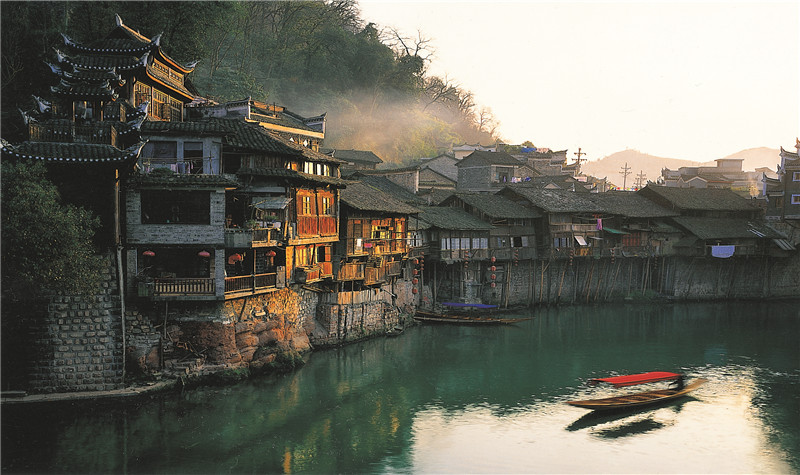
Boating on Tuojiang River
Tuojiang River is the mother river of Fenghuang. It has nurtured the town for generations. Let’s take a boat on Tuojiang River and admire the charming city. Drifting down theriver, you are presented with the scenes of Wanshou Palace, Wanming Pagoda, Tuocui Tower, old City Wall, towering Gates, and hundred-year-old hanging houses.
East Gate 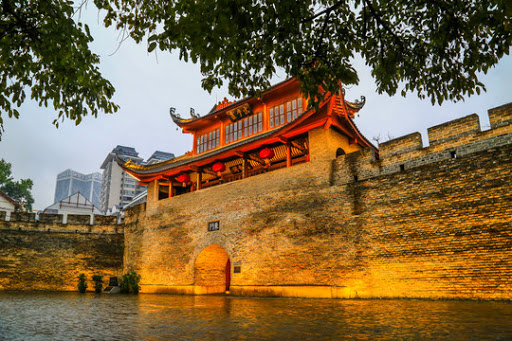
Located on the east side of City Wall, East Gate is one of the four gates of Fenghuang built in 1715. Its bottom was made of purple sandstone, and the top was made of ancient bricks. Two gates were covered with iron sheets and firmly pinned up by round iron nails. The roof of the gate is in resting hill style and exquisitely decorated with carvings.
Former Residence of Shen Congwen
Shen Congwen, the Father of Native Literature, is a famous litterateur, historian, and antique expert in China. He had many works being translated into English, Japanese, French, etc. Fenghuang was Shen Congwen’s hometown. He spent his early years in the place we are about to visit. Built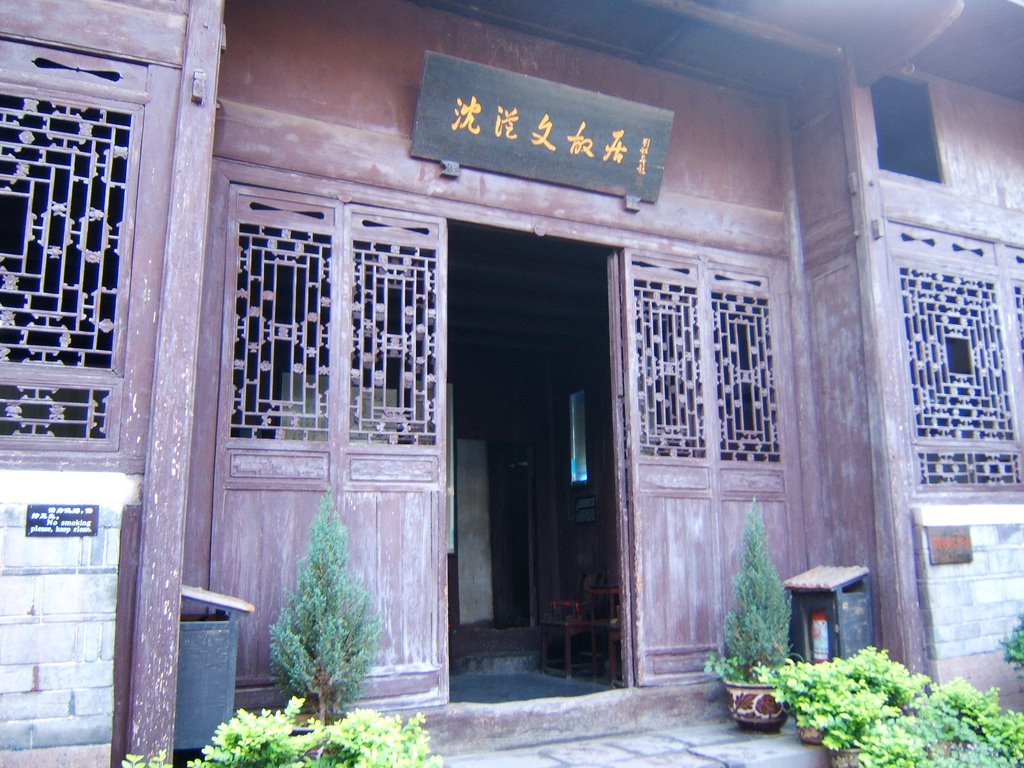 in 1866, Former Residence of Shen Congwen is a wooden Siheyuan building with an area of 600 square meters. It’s a great place to understand the talented writer.
in 1866, Former Residence of Shen Congwen is a wooden Siheyuan building with an area of 600 square meters. It’s a great place to understand the talented writer.
Former Residence of Xiong Xiling
In the back alley inside the Wenxing Street, nearby the beautiful Tuojiang River, there is a Miao shingle structure in Siheyuan style, the Former Residence of Xiong Xiling. It’s low but exquisite and rich in Miao architectural characteristics.
Xiong Xiling, from Fenghuang, was very talented in learning. He was very successful in making his way to imperial examinations in Qing Dynasty. He even became the first elected prime minister in the Republic of China. However, forced by other political powers, Xiong Xiling had no choice but to resign his title. In his late years, he dedicated himself to philanthropy and education. Visiting the Former Residence of Xiong Xiling, you will see how he grew up.
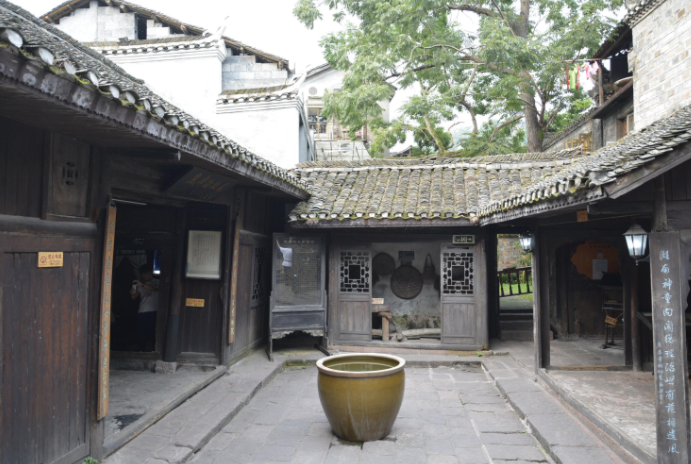
Yang’s Ancestral Temple
Built in 1836, Yang’s Ancestral Temple is a wooden Siheyuan building in the northeast of the town. It’s composed of gates, drama stage, corridors, wing-rooms, and main halls. The drama stage, 16m in height and 7m in width, has a single eave roof in resting hill style and a column and tie construction. The pillars of the stage are fashioned with carvings and paintings. The main hall of the temple is a beam building with one open room and two hidden rooms. The wing-rooms were arranged on both sides of the main hall. All the windows, doors and eaves are richly carved and etched. Therefore, Yang’s Ancestral Temple is a wonderful place to study local architecture.
Southern Great Wall 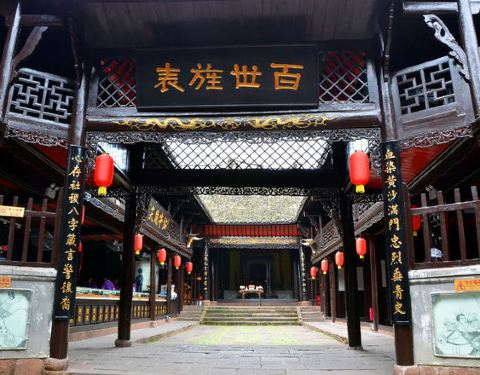
The construction of the Southern Great Wall began in 1554 and ended in 1622. The section starts from Tingziguan in the southern and ends at Xiqueying, with a whole length of 191km. It was built to block the trade and cultural communication between Miao and Han people. You can find a pass, barrack, and security post every 3-5 miles along the wall.
Huangsiqiao Ancient Town
Seated 24km from Fenghuang, Huangsiqiao Ancient Town was built in 686 (Tang dynasty). In 1700 (Qing dynasty), to appease and repress the minority groups of Hunan, the Qing court set up a local government here. Nine decades later, a large revolt broke out here, and Huangsiqiao became the strategic spot fought by both Miao and Han people. Since then, the Huangsiqiao town became famous. It’s a stone town sitting in the west and facing the east. All its walls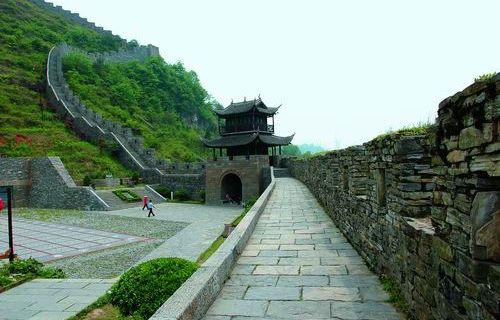 were built of giant boulders of over thousands of kilograms.
were built of giant boulders of over thousands of kilograms.
Qiliang Cave
Qiliang Cave is a classic carbonate cave. It’s composed of Old Battlefield, Gallery, Heaven, Dragon Palace, and Yinyang River. The grotesque stalagmites, stalactites, stone curtains, stone flowers, and stagnates under the colorful lumination create a magical scene. Inside the cave, there is a hall, which allegedly to be where Miao people congregated. There is a stone standing in the hall with a small hole. It will make a deep sound if you blow the hole.
Shanjiang Miao Village 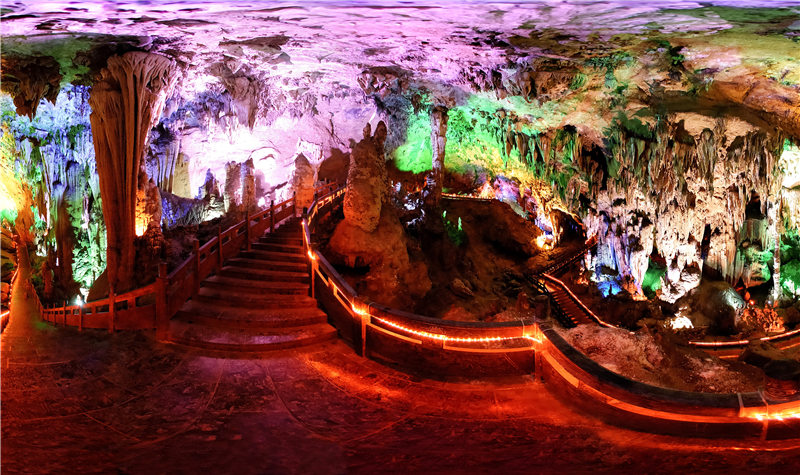
Located in a valley 20km northwest to Fenghuang, Shanjiang Miao Village is a small local Miao village. It was also called Frog Cave, as there is a cave beside the village housing tons of frogs. You will see Miao people wearing colorful ethnic costumes, experience exotic customs of Lanmenjiu (blocking your way and offering wine when you enter the gate), admire the characteristic buildings, and listen to the beautiful local songs.
Things Not to do 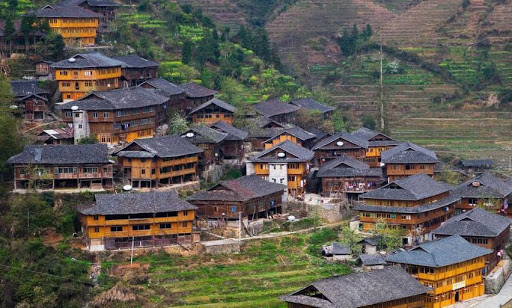
1.Don’t enter people’s houses without closing your umbrellas.
2.Don’t tread on thresholds.
3.Avoid living in a room with the opposite gender when you stay overnight at a local house.
4.Don’t sit in the center seat when you visit a local family.
5.Don’t make too many contacts with married women.
6.Don’t whistle in Miao village (locals people it’s used to summon devil).
Travel Guide of Fenghuang Ancient Town
1.Best time to visit: April - October.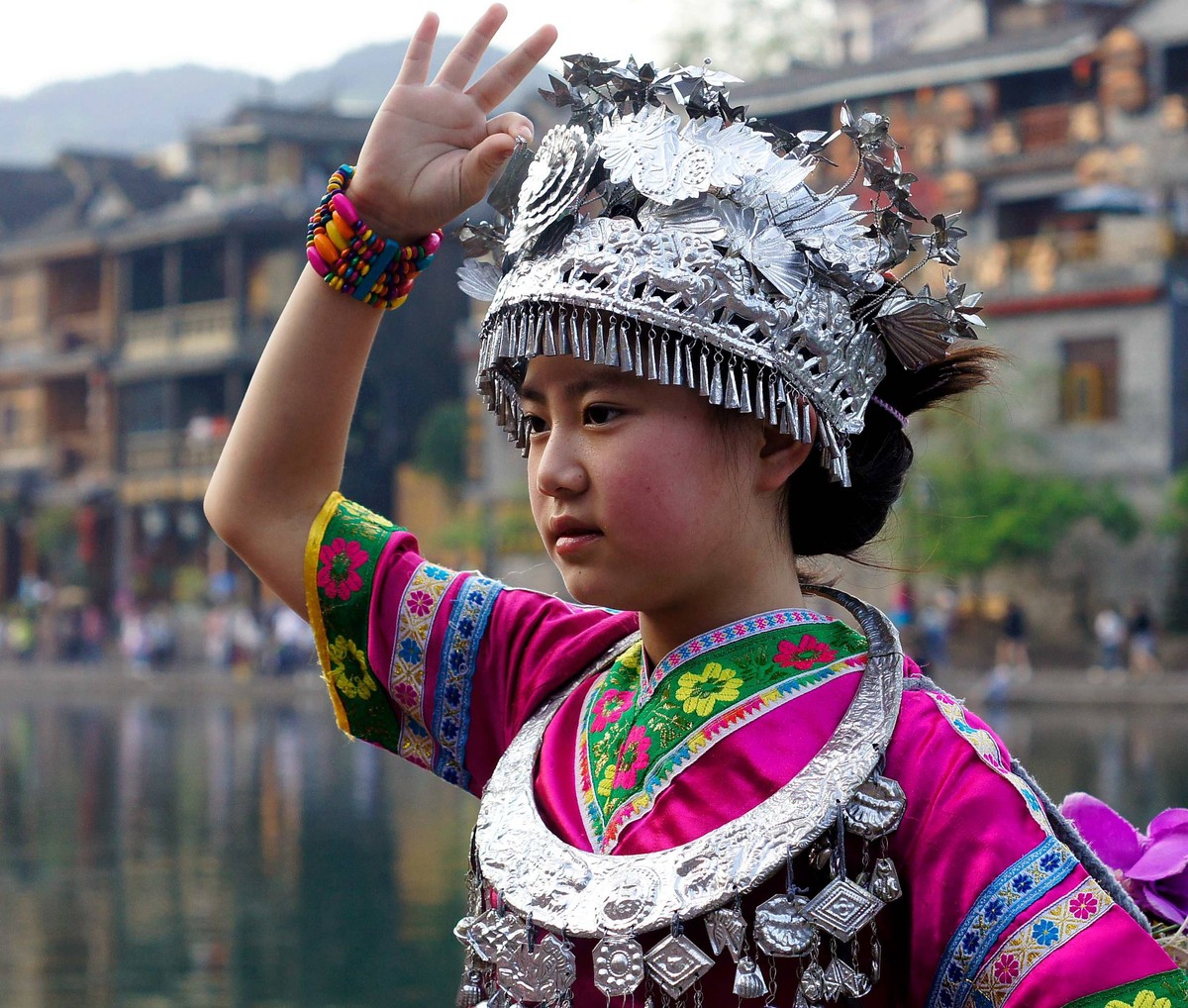 2.Entrance ticket: 135 RMB/pax.
3.Opening Hours: 8:00 - 18:00 (charged sights inside the town), the city itself opens all day.
4.Transportation
I.Exterior transportation
By train. You can take a train to Jishou Railway Station and take a local bus or taxi to Fenghuang. Most people visiting with us also travel to Zhangjiajie. Therefore, we often drive guests to Fenghuang, which takes about 4 hours.
II.Interior transportation
Fenghuang is a small town. You can walk the whole city for a few hours. If you want a different way to enjoy the city, riding a boat will be a great choice.
Recommended Itinerary: 7 Days Golden Hunan Tour to Fenghuang, Zhangjiajie and Changsha
2.Entrance ticket: 135 RMB/pax.
3.Opening Hours: 8:00 - 18:00 (charged sights inside the town), the city itself opens all day.
4.Transportation
I.Exterior transportation
By train. You can take a train to Jishou Railway Station and take a local bus or taxi to Fenghuang. Most people visiting with us also travel to Zhangjiajie. Therefore, we often drive guests to Fenghuang, which takes about 4 hours.
II.Interior transportation
Fenghuang is a small town. You can walk the whole city for a few hours. If you want a different way to enjoy the city, riding a boat will be a great choice.
Recommended Itinerary: 7 Days Golden Hunan Tour to Fenghuang, Zhangjiajie and Changsha
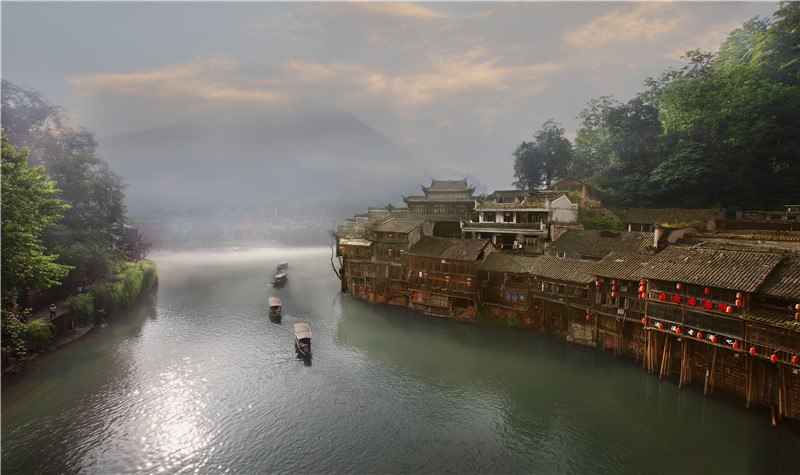


 in 1866, Former Residence of Shen Congwen is a wooden Siheyuan building with an area of 600 square meters. It’s a great place to understand the talented writer.
in 1866, Former Residence of Shen Congwen is a wooden Siheyuan building with an area of 600 square meters. It’s a great place to understand the talented writer.

 were built of giant boulders of over thousands of kilograms.
were built of giant boulders of over thousands of kilograms. 

